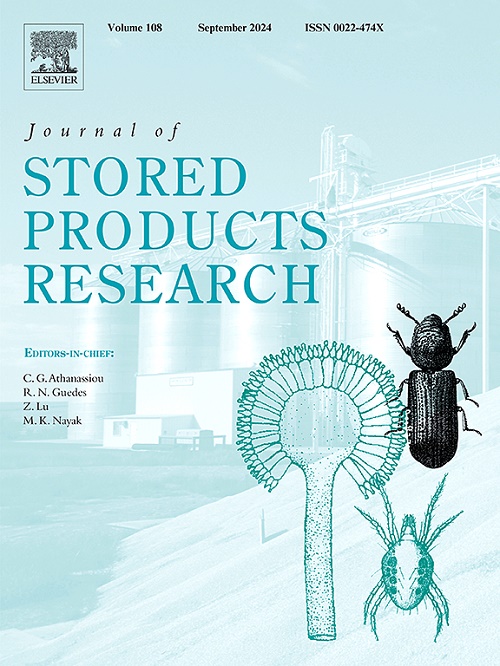Habrobracon hebetor ectoparasitism paralyzing effect on Corcyra cephalonica of different instar larvae
IF 2.7
2区 农林科学
Q1 ENTOMOLOGY
引用次数: 0
Abstract
Corcyra cephalonica (Lepidoptera) is an important storage product pest that damages rice, corn and other grains. Habrobracon hebetor is a parasitic wasp that is capable of paralyzing lepidopteran pests. However, how C. cephalonica affects the prey preferences, fitness, and functional response of H. hebetor remains poorly understood. We therefore used selective and nonselective, age–stage two-sex life tables and functional response models to determine how this problem could be solved. Our results showed that H. hebetor preferred the 4th to last instar larvae of C. cephalonica and that its functional responses were consistent with the Holling II model in these three instars. However, the search ability of the 4th instar larvae was strong and its processing time was short. Additionally, generative development can be completed in the 4th to last instar larvae of C. cephalonica, whereas the 5th instar provided wasp predators with the best life history, population and paralysis rate parameters measured in this study. We also found that the wasp displayed its highest population size and total paralysis rate within 60 days on 5th instar larvae. Thus, we conclude that 5th instar larvae are a suitable host for H. hebetor. These results not only provide a theoretical reason to use H. hebetor to control C. cephalonica infestation but also broadens the known host larvae selection range for industrial production of this parasitic wasp.
Habrobracon hebetor 外寄生虫对不同龄幼虫头蚬的麻痹作用
本文章由计算机程序翻译,如有差异,请以英文原文为准。
求助全文
约1分钟内获得全文
求助全文
来源期刊
CiteScore
5.70
自引率
18.50%
发文量
112
审稿时长
45 days
期刊介绍:
The Journal of Stored Products Research provides an international medium for the publication of both reviews and original results from laboratory and field studies on the preservation and safety of stored products, notably food stocks, covering storage-related problems from the producer through the supply chain to the consumer. Stored products are characterised by having relatively low moisture content and include raw and semi-processed foods, animal feedstuffs, and a range of other durable items, including materials such as clothing or museum artefacts.

 求助内容:
求助内容: 应助结果提醒方式:
应助结果提醒方式:


